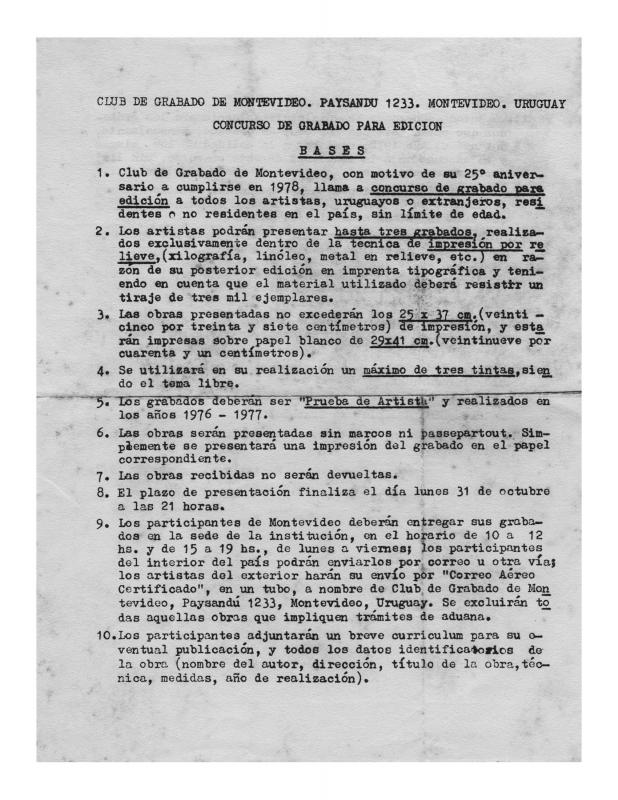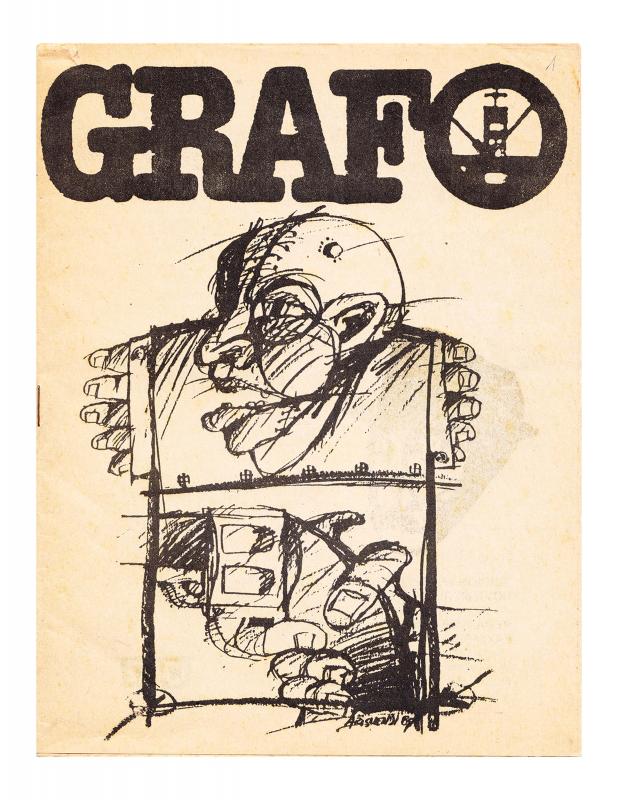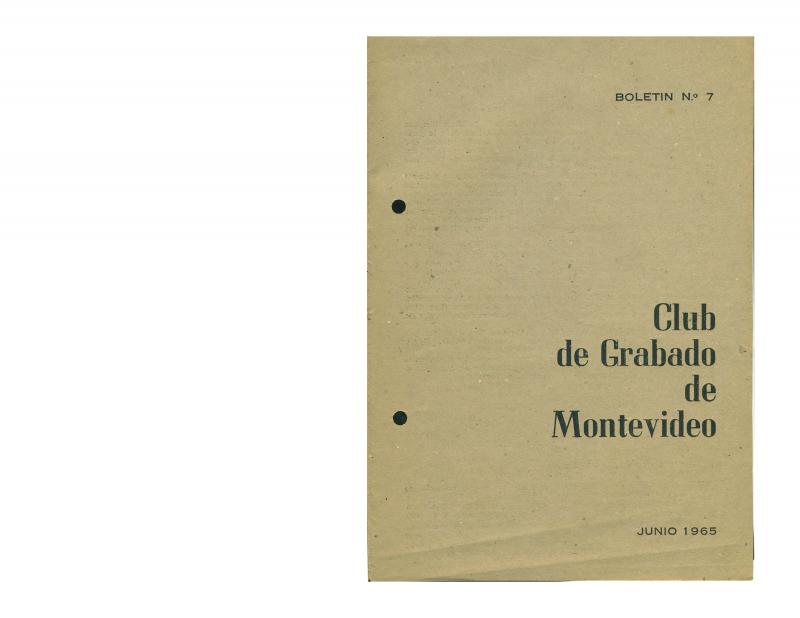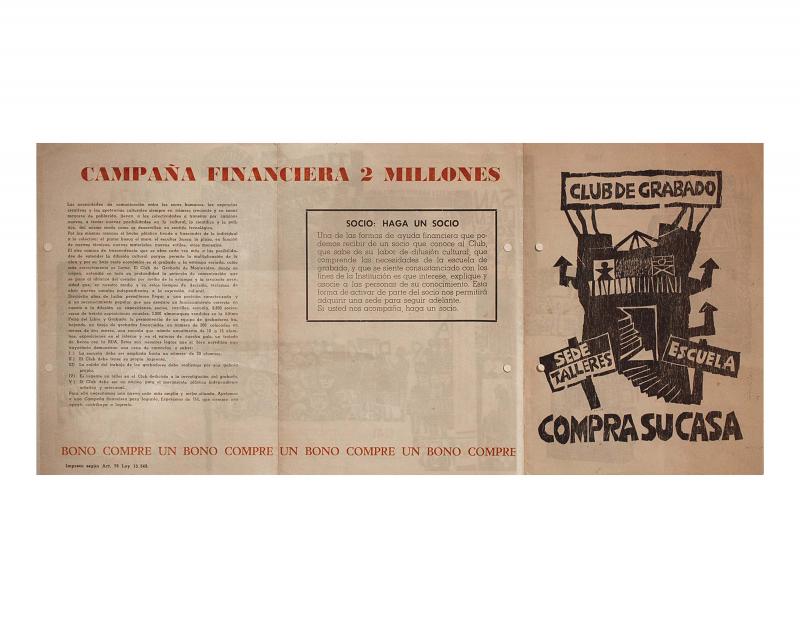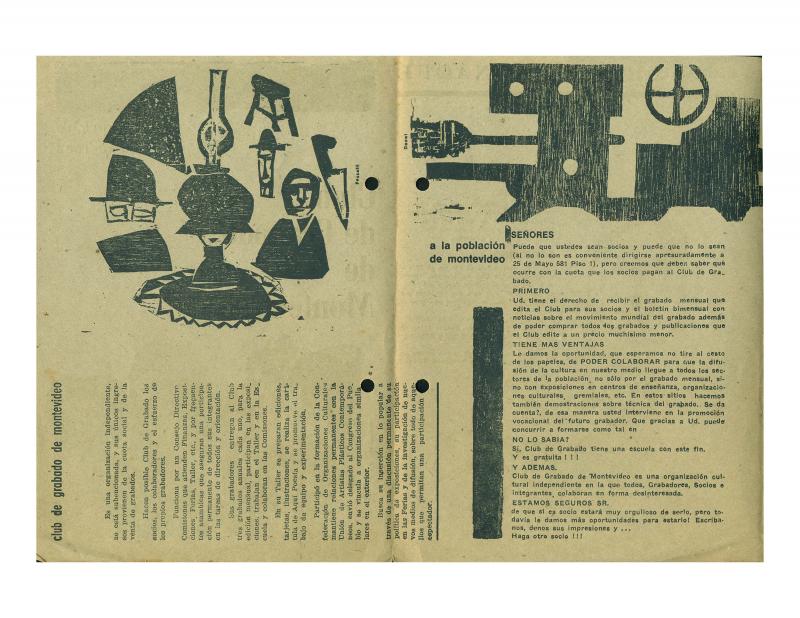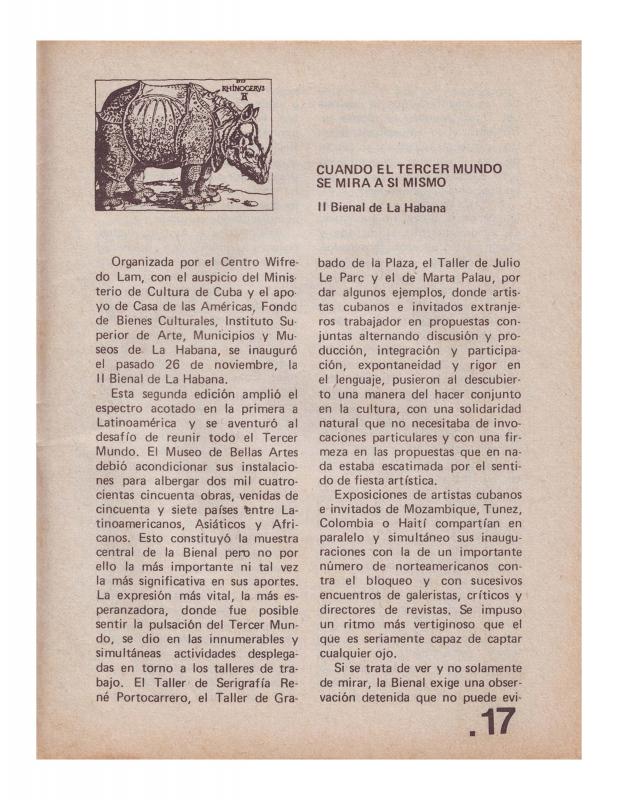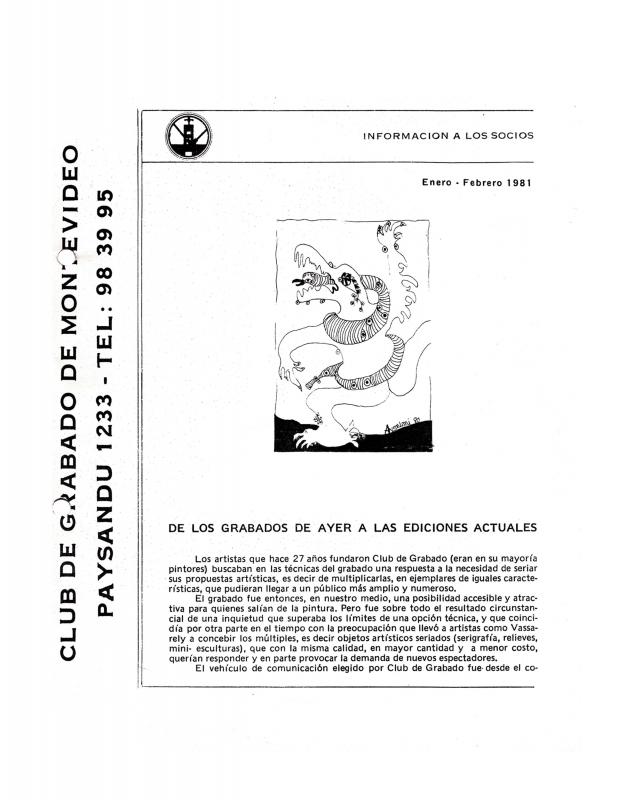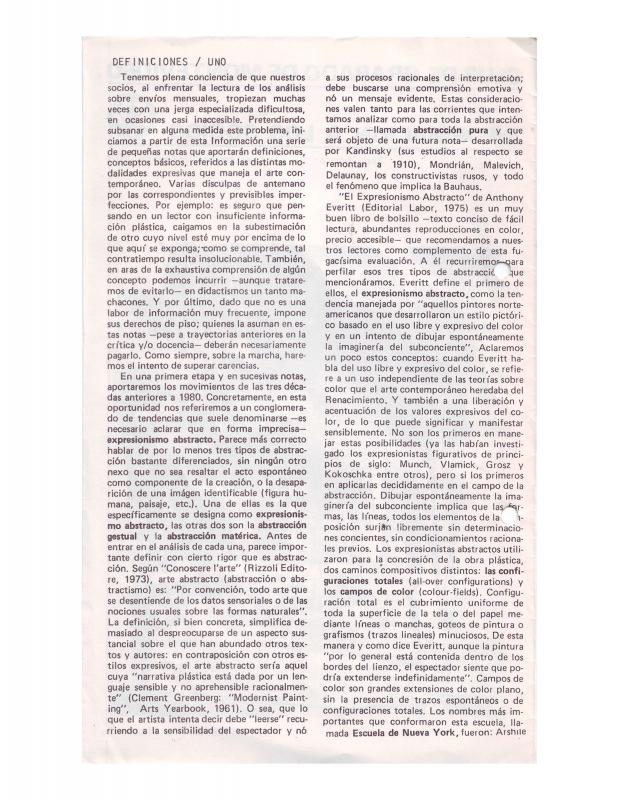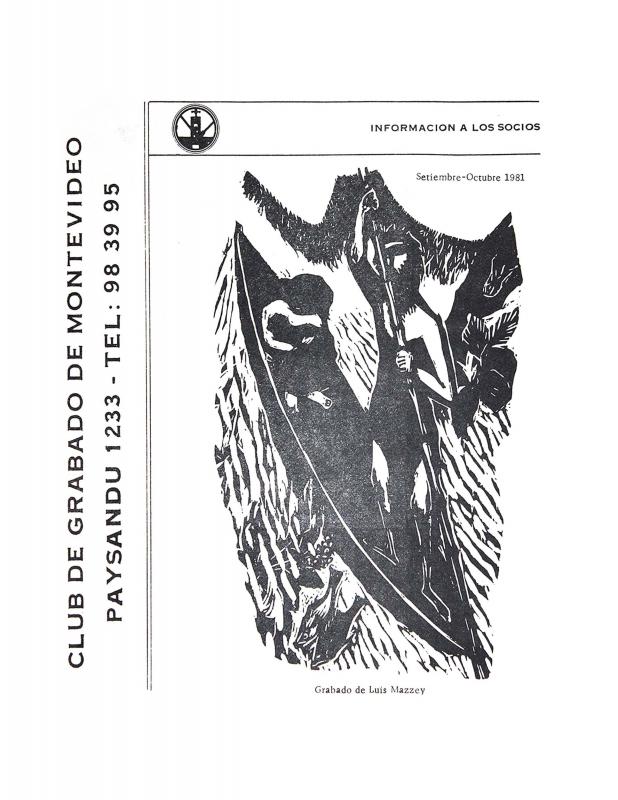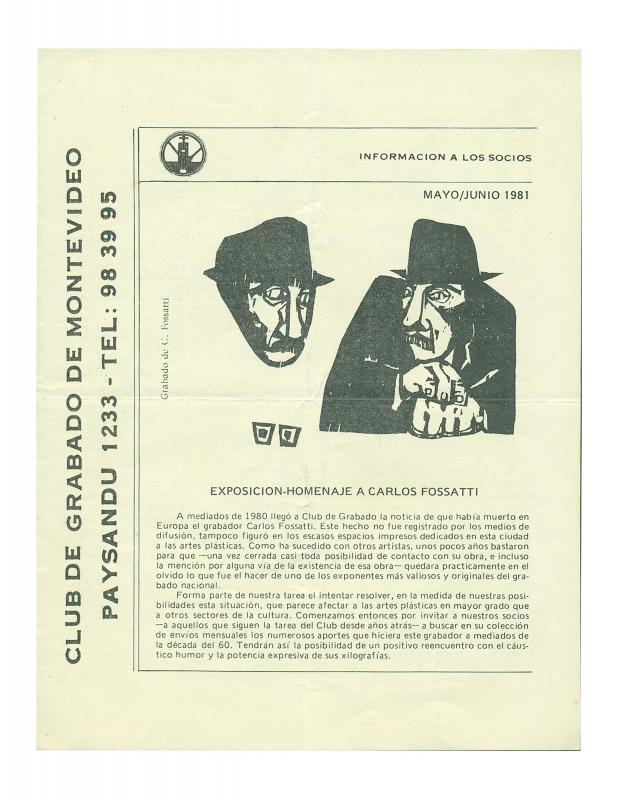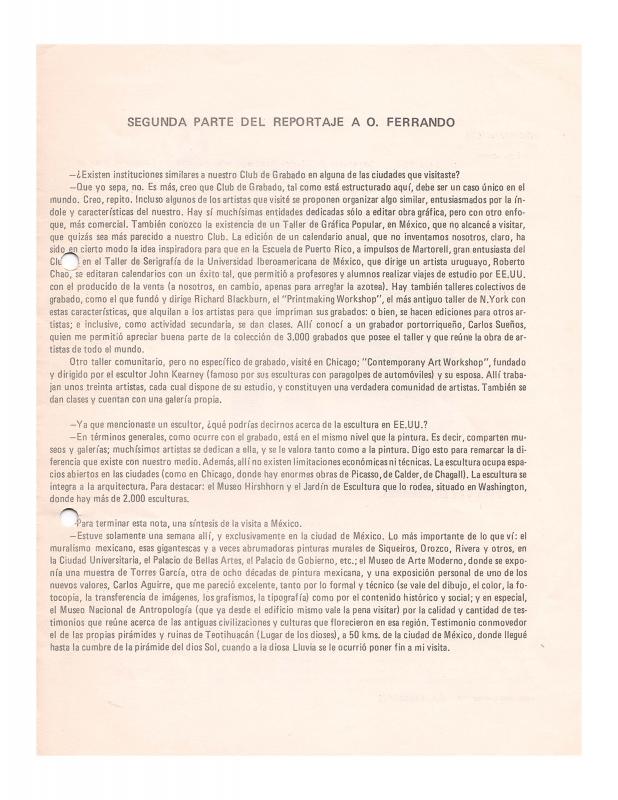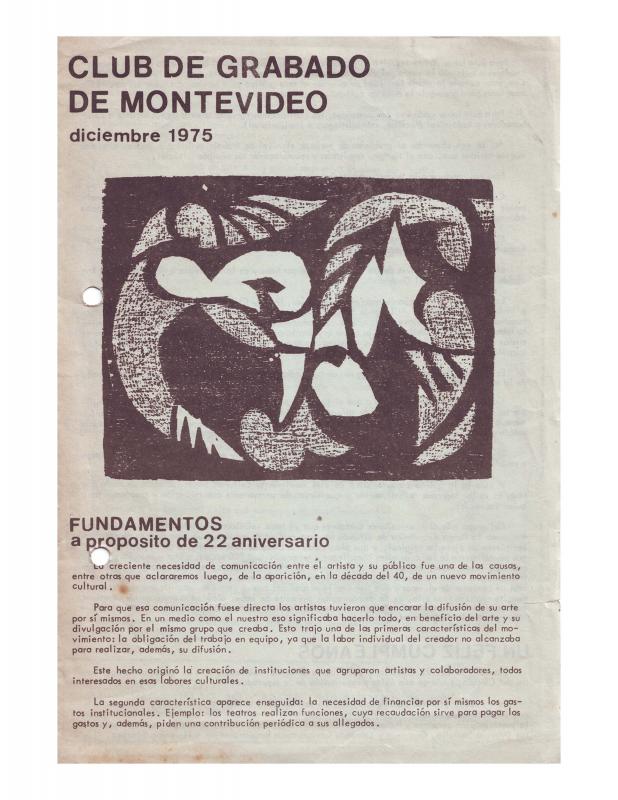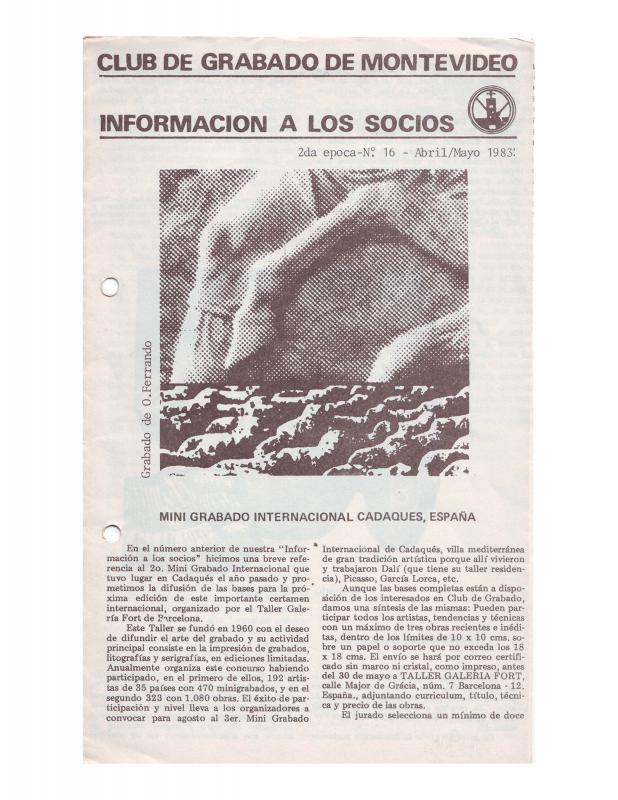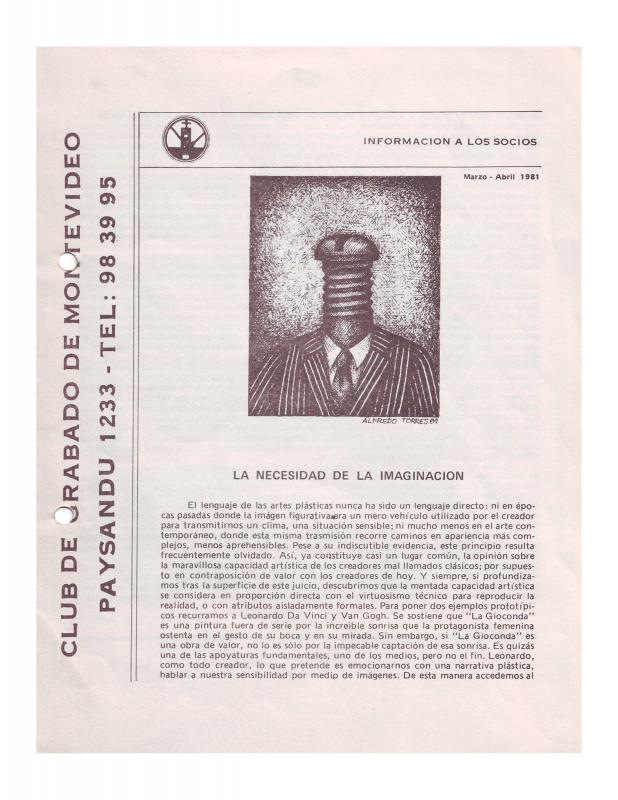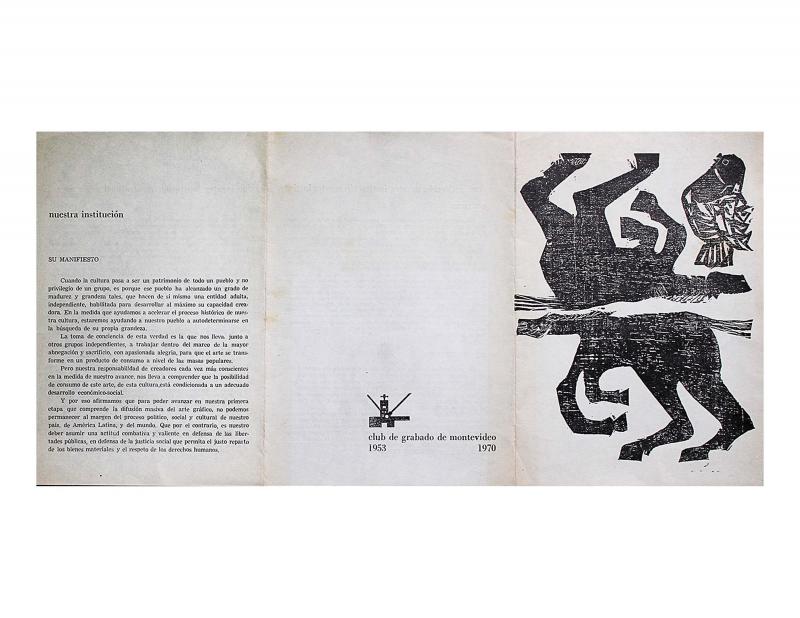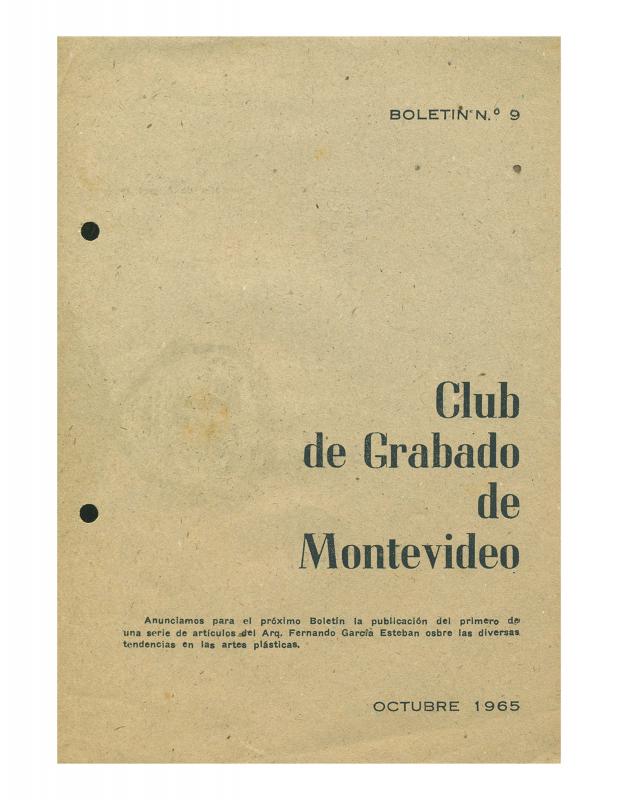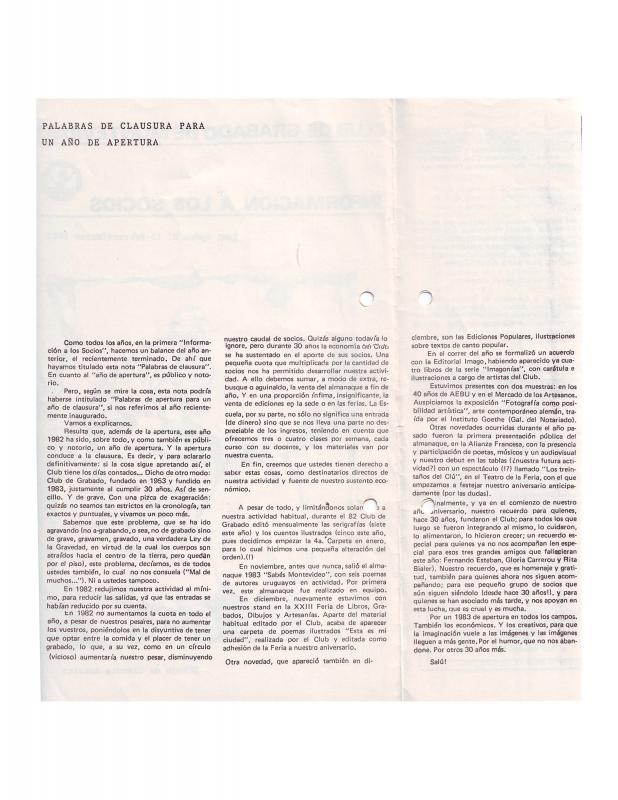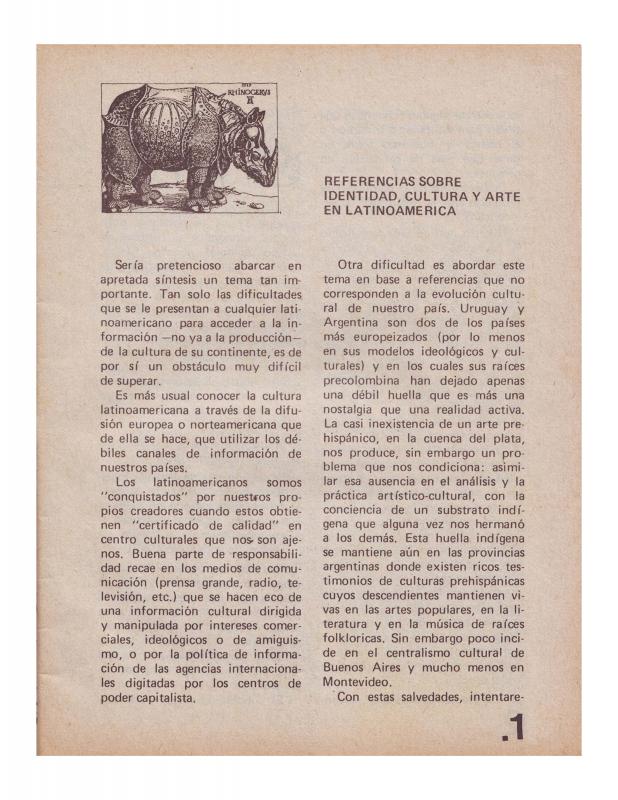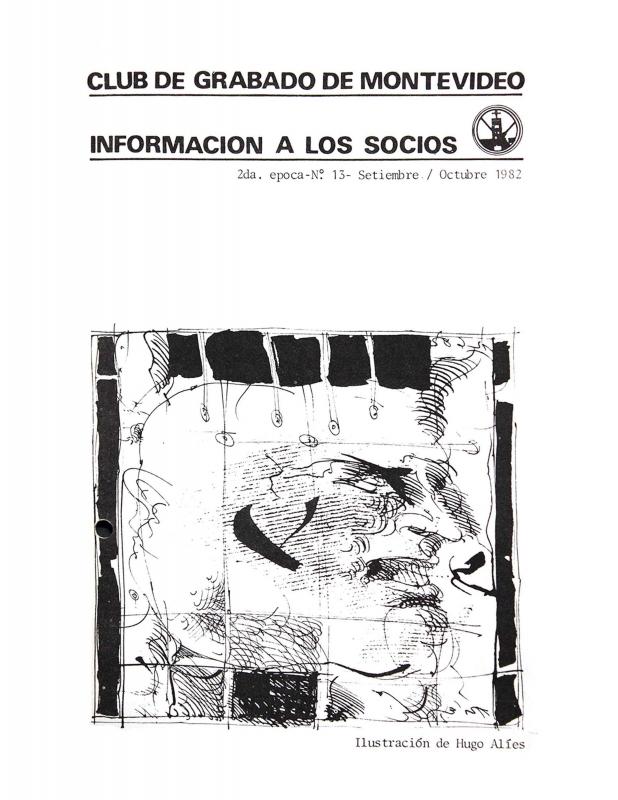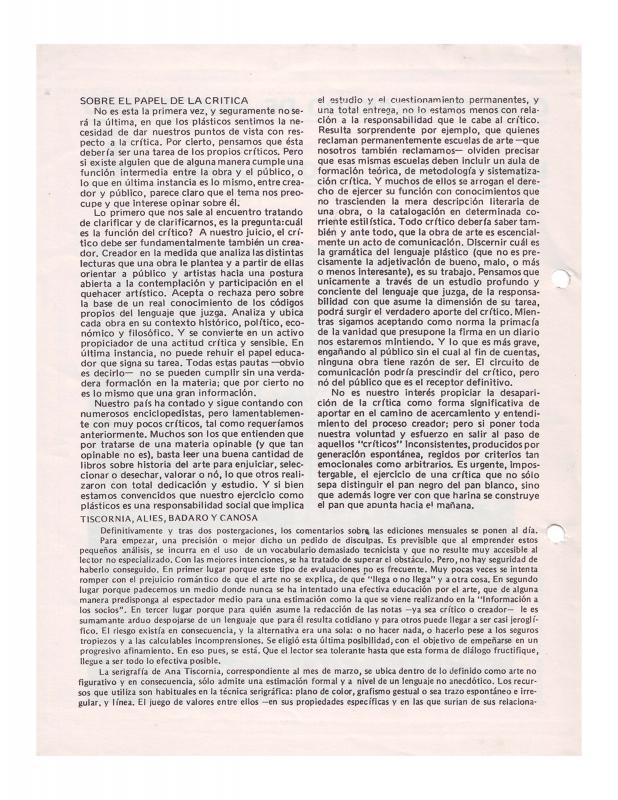The printmaker Carlos Fossatti (1928–80) and his wife, the printmaker Leonilda González (1923–2017), were prominent figures in the CGM in the 1960s, as they were the internal “avant-garde” of the institution in political-programmatic, aesthetic, and pedagogical terms. From 1953, when it was founded, until 1970 the CGM worked to develop an aesthetic based on a particular policy. There was a constant attempt to break down the social barriers of art and expose the community that was ready for great social changes to images that reflected the iconographic models produced by printmakers who shared the vision of that collective utopia. Fossatti expresses ideas that tend to identify the basic needs of the visual arts at that time.
First of all, he names two kinds of audience to which works of art are directed: a specialized group and a larger, universal one that includes almost all social levels, thus addressing the criteria of communication and specialization. Second, he stresses the difference between the role of the printmaker and the member of the CGM. The latter supports the institution and receives the prints it produces, but the printmaker artist is an agent who tries to place the group’s prints in a steadily expanding, and increasingly diverse, circle of venues such as theaters, educational associations and centers, arts and crafts fairs, and so on. All these circumstances, according to Fossatti, are complementary parts of a larger reality that is synthesized in the three fundamental criteria of the art of printmaking: specialization, exchange, and communication. He restates the idea of consolidating the country’s culture based on member-supported groups—like the CGM—since its ultimate goals cannot be separated from the desire to alter behaviors and promote social change that was being expressed at that time as a desire for a multi-class alliance that was gaining historical maturity.
[As complementary reading see, in the ICAA digital archive, the following texts published by the Club de Grabado de Montevideo: “Concurso de grabado para edición” (doc. no. 863481); “13 años de actividad de Club de Grabado de Montevideo” (doc. no. 1183571); “El arte correo en el Uruguay” (doc. no. 1191850); “Boletín N° 7 Club de Grabado de Montevideo” (doc. no. 1182833); “Club de Grabado compra su casa” (doc. no. 1192649); “Club de Grabado de Montevideo 22 Aniversario 1953 - Agosto 1975” (doc. no. 1183514); “Club de Grabado de Montevideo a la población de Montevideo” (doc. no. 1183124); “Cuando el Tercer Mundo se mira a sí mismo. II Bienal de La Habana” (doc. no. 1184459); “De los grabados de ayer a las ediciones actuales” (doc. no. 1191787); “Definiciones / Uno” (doc. no. 1189065); “Entrevista a Luis Mazzey” (doc. no. 1186991); “Entrevista a Óscar Ferrando” (doc. no. 1186747); “Entrevista a Óscar Ferrando [segunda parte]” (doc. no. 1186802); “Fundamentos a propósito de su 22 aniversario” (doc. no. 1182640); “Mini Grabado Internacional de Cadaqués. España” (doc. no. 1191135); “La necesidad de la imaginación” (doc. no. 1190793); “Nuestra institución” (doc. no. 1182010); “Los nuevos movimientos de las artes” (doc. no. 1182868); “Opiniones (I)” (doc. no. 1185411); “Palabras de clausura para un año de apertura” (doc. no. 1191167); “Referencias sobre identidad, cultura y arte en Latinoamérica” (doc. no. 1183641); “Reflexiones en torno a la supuesta crisis de las artes plásticas” (doc. no. 1185539); and “Sobre el papel de la crítica” (doc. no. 1187071)].

